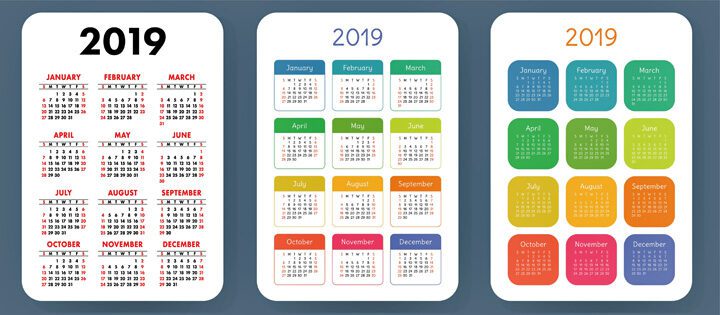The months of the year

After everyone has wished each other a happy New Year 2019, we will proceed to the order of the day. The month of January and other months are still ahead of us.
However, has this always been the case? No! The early Romans only counted 10 months in the year and the first 2 months did not exist. The month of March was the first month of the year. The god Mars fought with winter so that spring could return. As a result, Mars is seen as the god of war and the name March as spring month originated from the old Dutch name. Everything is starting to bloom again.
Only when scientists discovered at that time, around 354 years, that the earth revolved around the sun in 365 days, did the “year” have to be classified differently. Julius Caesar divided the year into 12 periods. He named the first month after the god Ianus, the god of doors and gates. It could look both forward (future) and backward (past), hence the two faces.
The month of February was “invented” by Julius Caesar to make the year correct with 365 days and therefore got 28 days. In addition, this month was placed before January, making it easier to calculate with more or less days at the end of the year. The name February is not very prosaic. At the end of the year, the houses were cleaned, which means februare in Latin, which is why the name February was used.
The months of March, April and June are named after Roman gods. A number of months, counting from March, are counting words. July should be "quintilus" fifth month, but Julius Caesar named this month after himself: July. The sixth month is August, named after Julius' cousin! The old Dutch name for August is harvest month. (Harvest in Latin augere).
The other months can be reduced to numbers. (September)ber, (October)ber, (Novem)ber and (December)ber. However, Charlemagne ordered that Germanic names be invented for all names of the month. This is how the name wine month came about for October because wine was made in France in his empire.
How did this come about in Thailand? The "New Year" was introduced in Thailand on January 1, 1940, but it is not an official holiday. However, the Western New Year is celebrated in a number of tourist places. Although the Gregorian calender is used in Thailand, the lunar calenders of Thailand are maintained with the associated Buddhist holidays. The traditional Buddhist New Year's Eve is well known. This year from April 13: the Songkran festival, an official religious festival of three days. This religious festival has in some places been relegated to a throwing and throwing party with water.


Nice explanation of the latin month names. Septem, octo, novem and decem is seven, eight, nine, ten, right?
But Songkran is not a Buddhist festival. It is a strictly secular and traditional festival, originating from Hindu culture. Songkran is a Sanskrit word and refers to a shift of constellations at that time. My parents also went to church on New Year's Day.
The Gregorian calendar is so called because it was introduced by Pope Gregory. This as a small addition.
The meaning of the Thai month names:
https://en.m.wikipedia.org/wiki/Thai_solar_calendarte